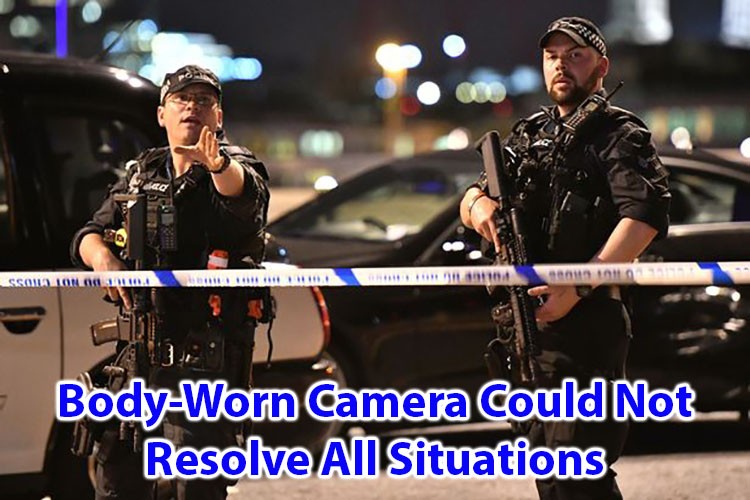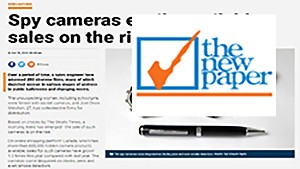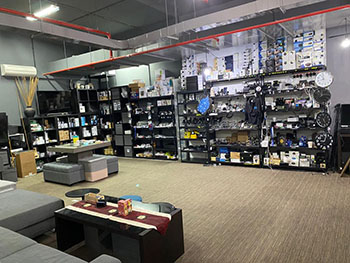Body-Worn Camera could not Resolve All Situations
The belief that bodycam film will both unequivocally show what occurred in basic occurrences including police and regular people and in this manner check unjustified employments of power is shared by legislators, police divisions, common freedoms gatherings and the vast majority of the general population. The expectation is that bodycam use will help unravel the undeniably tangled records among police and natives about what occurred during a lethal or close deadly experience. That expectation has provoked neighborhoods and governments to burn through a great many dollars guaranteeing bodycams across the board selection.
Basically, individuals trust what they see. So video feels like it ought to be the fix that will decrease the number of associations among police and residents that outcome in over the top power.
Be that as it may, mental research proposes there are at any rate three reasons why bodycam film won’t give the objectivity individuals anticipate.
Bodycam – and human – weaknesses:
First is a constraint of the innovation: Bodycam film commonly gives a limited perspective on an episode. What individuals can see is frequently equivocal, as a result of the situating of the camera at chest stature on the official’s uniform. Different breaking points are made by the camera focal point and natural hindrances. Significantly, individuals see questionable boosts in manners that match their convictions and inclinations, a wonder instituted “impractical seeing.”
Applied to police film, this implies individuals’ dispositions toward police impact what they see.
For instance, when individuals watched the video of an official cooperating with a native, the individuals who were told to concentrate on the official and who related to police – that is, they detailed reasoning they had comparable qualities to cops or shared a comparative foundation – saw the official’s activities as less implicating.
These individuals additionally would, in general, prescribe increasingly permissive discipline for the official contrasted with individuals who concentrated on the official yet didn’t relate to the police.
Along these lines, in the event that you believe cops and trust you share their qualities, you consider there to be as progressively defended.
Second, the reality the official isn’t delineated in the bodycam film means individuals will concentrate just on the non-military personnel’s conduct and activities. That can have critical outcomes.
For instance, in police cross-examinations, when the camera is coordinated exclusively at the suspect, individuals will in general rebate the investigator’s job in the scene. Then again, when they can see the analyst, they consider how interesting or coercive the cross-examination strategies might be and will, in general, be increasingly thoughtful to the suspect.
This implies the point of view of the camera actually slants the data individuals center around.
Similarly, in light of the fact that bodycams center around the non-military personnel, individuals may overlook significant data concerning the official’s job in the experience. In reality, some proof recommends that an observer’s account of a police experience can paint a generally unexpected picture in comparison to the bodycam, prompting totally various decisions about what the recording appears.
Third, individuals’ general frames of mind toward police don’t simply impact how they translate the police conduct in film. Those demeanors likewise impact what they saw in the bodycam film.
We found that individuals who related to the police (once more, individuals who thought the police were like them) were bound to depend on an official’s report to comprehend what they saw in the bodycam film.
All the more explicitly, they revealed that the non-military personnel in the video was employing a blade – however, no blade was in the video – in light of the fact that the official said he saw a blade. The individuals who saw the video were attempting to comprehend the official’s activities utilizing data they had recently adopted, despite the fact that it didn’t fit with the recording.
Generally, the official’s report filled in as a wellspring of misdirecting data, and that is the thing that individuals saw.
Tragically, inquire about on deception impacts, for example, this shows they are famously hard to right, notwithstanding when individuals are cautioned the data isn’t right or are given a clarification for why the mistake happened.
Why it matters:
These variables would present to a lesser extent an issue if individuals had the capacity to recognize their predispositions and right for them.
Be that as it may, they don’t.
Rather, individuals accept that what they see and recollect is an exact portrayal of the world, regardless of whether what they see and recall is mistaken.
Strangely, individuals recognize that predispositions in other individuals’ observation and memory will limit the other individuals’ capacity to be target spectators of police film.
However, individuals accept they can set their very own predispositions aside. The mental writing recommends that this conviction is mistaken and may undermine the capacity for basic pondering.
The bodycam film is gigantically significant on the grounds that it will probably shield the two officials and regular citizens from dishonest indictments. In any case, it must be recognized that individuals’ visual and memory inclinations are bound to develop when the proof is uncertain and individuals are careless in their objectivity.
So bodycam film is probably not going to be the main answer to improve loaded police-network relations. The equity framework will need to wrestle further with how to deal with these issues.
Concerns:
One of the most urgent concerns rousing the boundless selection of bodycams is the utilization of power by the police. In the outcome of the 2014 passings of Eric Garner, Michael Brown, Tamir Rice and numerous others, there was a purposeful exertion to prevail upon the general population to bodycams with the guarantee of equity. At the point when a St. Louis excellent jury chose not to arraign Michael Brown’s executioner, his family requested that the nation participates in a “battle to guarantee that each cop working the avenues in this nation wears a body camera.”
Be that as it may, the flimsy, low nature of bodycam film regularly includes what pundits call a “tricky power,” which can help legitimize police utilization of power.
One of the main significant assessments of bodycams, in 2014 by the Police Executive Research Forum, offered the enticing guarantee that “body-worn cameras are keeping issues from emerging in any case by expanding official polished methodology, helping organizations assess and improve official execution, and enabling officers to recognize and address bigger auxiliary issues inside the division.” The following year, when Attorney General Loretta Lynch reported a $23 million bodycam experimental run program, she reverberated the guarantee of “straightforwardness, responsibility, and believability.”
The reality has proved far more complicated.
Careless departmental strategies give numerous officials attentiveness over when and what to record. Join that with disproportionate security insurances, which are more centered around ensuring officials than the overall population, and bodycams start to look less like an instrument to keep cops in line and progressively like a device to screen regular folks. We think about Mr. Timpa’s agonizing last minutes simply because of a three-year legitimate crusade by The Dallas Morning News to have the recording discharged. What’s more, that case isn’t an anomaly.
The New York Police Department neglected to discharge bodycam film in 40 percent of situations where it was mentioned by the Civilian Complaint Review Board. However, when the recording is ideal for the police, it is regularly discharged or secretly spilled inside only hours. That twofold standard can twist the open’s comprehension of how and when the police use power.
These variables would be sufficient to cool the crusade for bodycam appropriation, yet the damages go a lot further. Frequently, the instruments that are offered to people in general as a component to consider officials responsible are betrayed the very networks they should engage.
Each official’s bodycam catches data on hundreds or even a great many people that an official sees on a given day. These accounts can uncover a great deal about honest individuals from people in general, yet the security effect is possibly intensified when joined with the developing spotlight on coordinating facial acknowledgment observation into existing bodycams.
Facial acknowledgment incorporated with bodycams would enable the police to transform a stroll down the square into a warrantless pursuit of where individuals go and with whom they partner. An official remaining outside a fetus removal facility or political dissent, for instance, could cool a portion of our most key protected rights.
Worries about viewpoint and the specific chronicle that apply to bodycams likewise apply to recordings of police cross-examination. Obviously, cross-examination recordings shot from the point of view of a suspect are significantly more successful in persuading watchers that admission was constrained contrasted and recordings shot from the viewpoint of the police investigative specialists. Be that as it may, not at all like with police bodycams, which are connected to officials’ outfits, there’s no specialized reason for chronicle just a single point of view of a discussion. However, when near two dozen states do not have any necessity to record custodial cross-examinations, barely any, order that cameras show cross-examinations from an impartial point of view.
This pattern is additionally clear in A.I.- driven measurable science. Chief James O’Neill of the New York Police Department wrote in The Times as of late that facial acknowledgment is a device to ensure respondents: “The product has likewise cleared suspects. … When facial acknowledgment innovation is utilized as a restricted and primer advance in an examination — the manner in which our area of expertise utilizes it — these unnatural birth cycles of equity are more outlandish.” Yet this portrayal of facial acknowledgment looks somewhat like the substances of his specialty’s practices.
In any event one recorded case, this alleged defense against unjust conviction prompted the police messaging an alleged photograph match to an observer and asking, “Is this the person?” This kind of driving inquiry is actually the sort of pollution that can propose a bogus recognizable proof to onlookers, driving them to later misidentify an individual in court. Once more, an innovation sold on the guarantee of responsibility transformed into danger to security.
Every one of these issues has its own answers. For bodycams, that implies new protection shields and cutoff points on official caution about when to record. For cross-examinations, it means taping them from an impartial point and for the length of addressing. What’s more, for facial acknowledgment, it implies a ban until inquiries concerning predisposition can be settled.
It is astute to be careful about specialized fixes to confusing issues. It’s ever more clear that the observation arrangements can be more terrible than the issue they try to fix.









